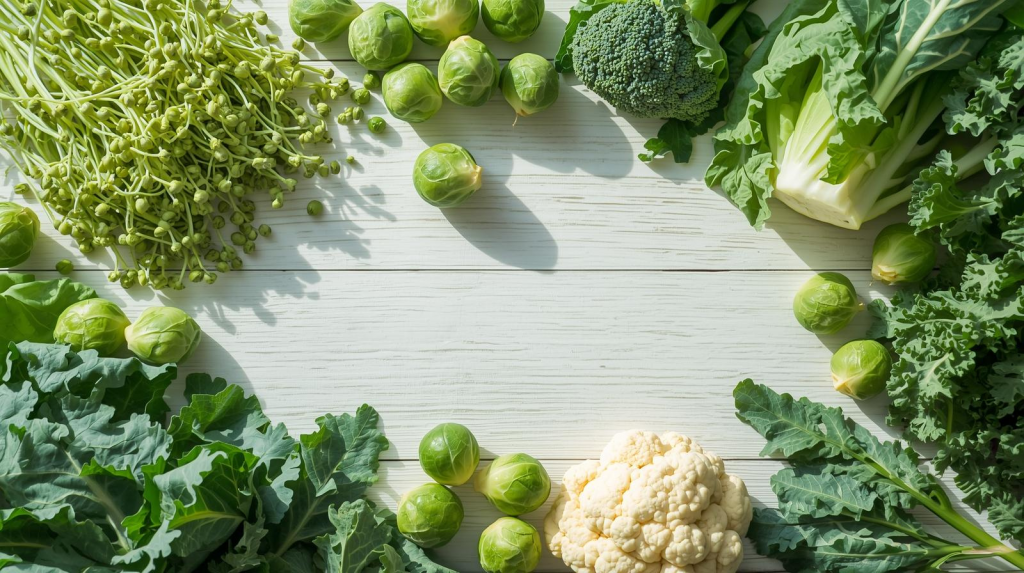What Is Sulforaphane? A Simple Guide
Sulforaphane is a plant nutrient. It comes from vegetables like broccoli, kale, and cabbage. When you chew or chop these foods, sulforaphane is released.
This small compound has big effects. In fact, studies suggest it may fight stress in the body. Consequently”, it may lower inflammation and protect against disease. But first, you need to know how to get the most from it.
Foods That Have Sulforaphane

You can get sulforaphane from:
- Broccoli sprouts – the richest source by far (Johns Hopkins). Plus, they have 10-100 times more than regular broccoli.
- Brussels sprouts – small but powerful.
- Cauliflower – mild and easy to add.
- Kale – full of nutrients.
- Cabbage – tasty raw or steamed.
- Radishes – crunchy and fresh.
👉 Want a simple daily source? Then try growing microgreens at home with a free guide from Everyday Mastery
How to Prepare These Foods
How you prepare these vegetables matters a lot. When you chop or chew them, you turn on a special enzyme. Then, this enzyme makes sulforaphane from another compound.
Here’s what works best:
- Raw vegetables give you the most of this compound
- Light steaming (3-4 minutes) keeps the good enzymes
- Heavy boiling destroys the enzymes and cuts sulforaphane way down
Additionally, timing matters. Sulforaphane breaks down over time. So, eat these vegetables fresh or soon after light cooking.
Benefits of Sulforaphane
1. Fights Body Stress
It boosts your body’s natural defences. As a result, it helps protect cells from damage (NIH).
2. Reduces Swelling
Chronic swelling causes many health problems. However, this chemical may calm this process. Therefore, it can improve your overall health.
3. Supports Cancer Prevention
Studies show that it slows cancer cell growth. Consequently it may lower risks of colon, breast, and prostate cancer (AICR). However, most studies used lab dishes or animals.
4. Helps the Heart
May lower blood pressure and cholesterol. As a result, this helps protect your heart and blood vessels.
5. Protects the Brain
Early studies suggest it shields brain cells. For example, it may reduce damage from brain diseases (PubMed).
6. Balances Blood Sugar
Furthermore, it helps your body use insulin better. Therefore, it may help people with diabetes.
New Research Areas on Sulforaphane
Scientists continue studying in new ways:
- Autism: Small trials show sulforaphane may ease some symptoms. However, we need bigger studies (Hopkins Medicine).
- Gut health: It appears to support good gut bacteria. At the same time, it reduces harmful ones (Frontiers in Nutrition).
- Skin protection: It may protect against sun damage. Additionally, it may support healthy aging (OSU Linus Pauling Institute).
Important Things to Know about Sulforaphane
Research Limits
- Human studies are still small. While animal studies look promising, we need more human research. Therefore, the benefits aren’t fully proven yet.
- People respond differently. Some people have gut bacteria that work better with sulforaphane. As a result, benefits vary from person to person.
Safety and Amount
- High doses can be tricky. Broccoli sprouts give the most sulforaphane naturally. However, supplements vary a lot
- It works by mild stress. Sulforaphane creates small, helpful stress on cells. Usually this is good. But too much could be harmful.
Possible Side Effects
- Thyroid concerns. Large amounts of these vegetables may affect your thyroid. This is especially true for sensitive people.
- Drug interactions. These compounds may interact with some medicines.
- Stomach issues. Some people get gas or bloating from eating more of these vegetables.
Always check with your doctor first. This is especially important if you have health conditions.
How to Get More Sulforaphane
Daily Tips
- Start your day with broccoli sprouts in smoothies or on toast
- Add raw vegetables to salads, bowls, or sandwiches
- Mix up your choices for variety and more nutrients
- Try different ways like soups, stir-fries, or fresh slaws
Getting the Most Benefits
- Chop and wait: After chopping vegetables, wait 5-10 minutes. Then cook them. This allows more enzyme action.
- Steam lightly: If cooking, use little water and short times
- Pair wisely: Eat them with foods rich in vitamin C. This helps your body absorb more.
Final Thoughts
Sulforaphane is a powerful nutrient found in vegetables like broccoli and kale. It may fight body stress, lower swelling, and protect the heart and brain. Even so, we need more human research to fully understand it.
Still, the best step is simple: eat more broccoli, sprouts, kale, and similar vegetables. By doing this regularly, you’ll boost your sulforaphane intake. Additionally, you’ll support your long-term health in many ways.
Most importantly, focus on variety and preparation methods that keep the compound active. Instead of relying on supplements with unclear quality, whole foods give you sulforaphane. Plus, they provide fiber, vitamins, and other helpful compounds that work together.
👉 Start small today: Learn how to grow your own microgreens. Or simply add fresh broccoli sprouts to your next meal.

